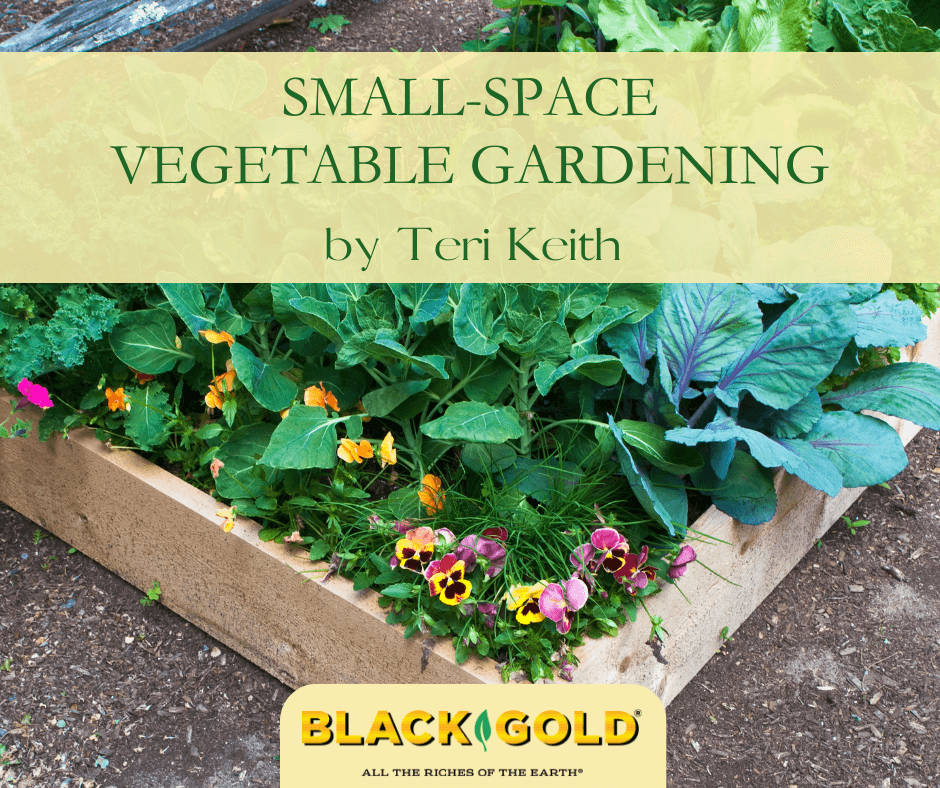
You want a vegetable garden, but you’re stuck with a postage stamp-sized plot of grass and/or a teeny tiny deck/patio of approximately the same area. What are your options? How about a small raised bed or a few nifty container gardens for some of your favorite veggies?
The key to small-space gardening is starting with a good garden base and planting the right cultivars. Small raised beds will be most productive if they are filled with good-quality soil and situated in the sun. Add a few large, 5-gallon plastic pots to your new vegetable garden venture, rotate your vegetables accordingly, and you will be set.
Small-Space Garden Ground Rules
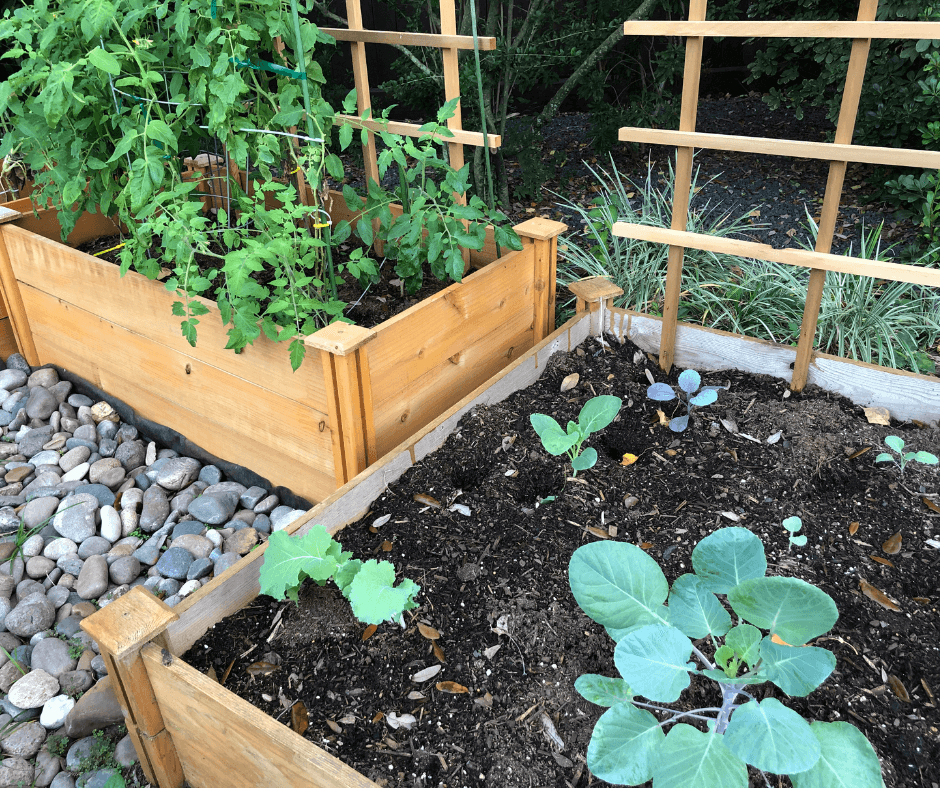
- Grow compact vegetables because container- and small-raised-bed gardens impose limitations on plant size! Avoid large crops such as corn, melons, pole beans, and vining pumpkins. (Plant lists are below.)
- Choose a good location for your garden. Ideally, the spot will have full sunlight (8-10 hours), protection from wind, and quality soil in a bed or pot with good drainage.
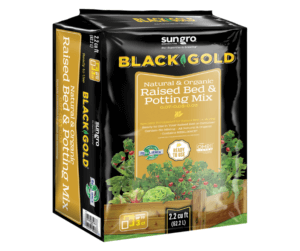 Choose the right-sized beds and containers. They should be large and deep enough to support crops. A soil depth of 12″-18″ in raised beds is recommended for deep root growth and productivity. 5-gallon pots are a good size for most potted vegetables. Some gardeners even rely on inexpensive 5-gallon hardware-store buckets with holes poked into the base, especially for pot-grown tomatoes. Ultimately, choosing large containers saves time because they need less water and encourage more growth and productivity.
Choose the right-sized beds and containers. They should be large and deep enough to support crops. A soil depth of 12″-18″ in raised beds is recommended for deep root growth and productivity. 5-gallon pots are a good size for most potted vegetables. Some gardeners even rely on inexpensive 5-gallon hardware-store buckets with holes poked into the base, especially for pot-grown tomatoes. Ultimately, choosing large containers saves time because they need less water and encourage more growth and productivity.- Choose the right pot. Most gardeners prefer light-colored plastic pots with good drainage for vegetables because they stay cool and plastic retains water better than most pottery. Drain holes are mandatory and maintaining deep saucers at the bottom for water collection helps reduce the need to water as often.
- Use quality potting soil and vegetable fertilizer. Do not rely on in-ground garden soil as a planting medium (really!). More organic matter is needed, especially in containers. We recommend raised bed soil amended with Black Gold Natural & Organic Raised Bed Mix and pots filled with Black Gold® Natural & Organic Potting Mix to meet the demands of your container crops from start to finish. Some experts also advocate filling container bottoms with dead (not green) lawn sweepings or compost, such as Black Gold Natural & Organic Compost Blend, and then following that with a foot or more of potting mix.
- Plan ahead for weekly care. Smaller gardens need less care, but you will still need to water, weed, feed, and harvest regularly. Plan a care schedule for each week. Be most conscientious of container plants because they are especially subject to drying and nutrient loss.
- Plan to replace crops. Some crops, like beans, greens, and root vegetables are fast-growing. Determine their days to harvest (click here for a harvest guide), and plan to replace them once they are picked or no longer productive.
Vegetables for Small-Space Gardens
Tomatoes
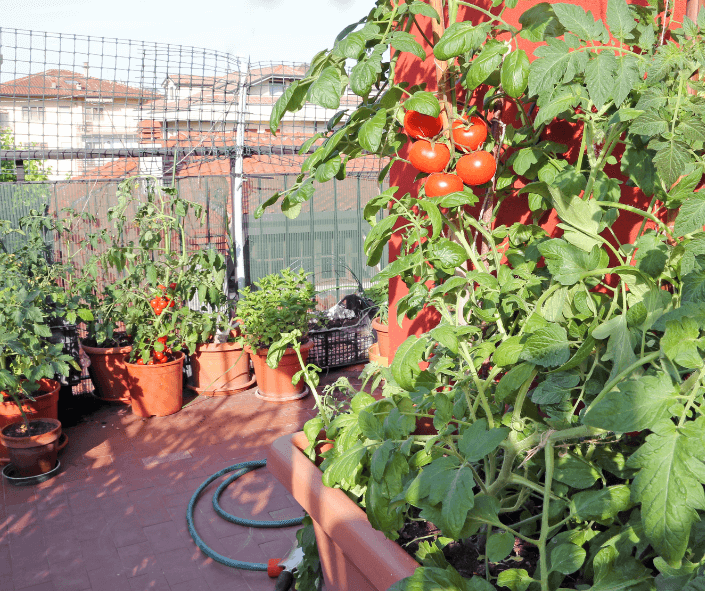
Choose compact bush (determinate) or semi-bush (semi-determinate) tomatoes for small-space raised beds and pots. Super small pot tomatoes include the disease-resistant cherry tomato ‘Sweetheart of the Patio‘ (24-36″) and salad tomato ‘Patio Delight’ (12-18″). Larger determinate tomatoes for caging or staking including the flavorful, red, slicing tomato ‘Celebrity’ (36-40″), the early beefsteak ‘Galahad‘ (24-36″), and golden sauce tomato, ‘Sunrise Sauce‘ (24-36″).
Planting recommendations: plant one plant per 5-gallon container. Cage or stake plants reaching 18″ or more. Manage tomato growth by cutting back excessive vining stems once they start really growing. (Click here for more tomato pruning guidelines.) Feed tomatoes regularly with a fertilizer formulated for tomatoes.
Cucumbers
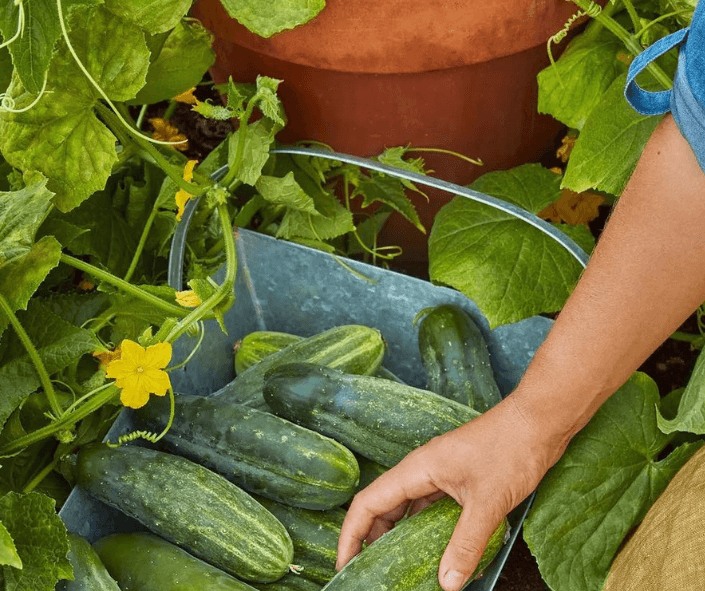
Slicing cucumbers have now been bred in compact form for pots. The most notable variety is the tried and true, ‘Spacemaster‘. The variety has diseases-resistant vines reaching just 26 inches! ‘Bush Champion‘ is another compact variety with vines reaching 24″, and it’s said to produce high yields. Both have medium-sized cukes. Harvest them smaller if you intend to use them for pickling.
Planting recommendations: Plant one or two plants per 5-gallon pot. The seeds can be directly sown into pots. A small trellis can be used if desired. Feed and water regularly, just as the potting soil begins to dry, or the plants will not bear fruit.
Green Beans
Bush beans, green, wax, or filet, are ideally suited to large-container planting. Some varieties are prolific bearers with excellent flavor. Four to five plants are needed per 5-gallon pot. Avoid overfeeding. Beans are legumes and need no extra nitrogen. Beans use a lot of moisture so use a potting mix with good water-holding capacity and water regularly. Several quality varieties
Sweet Peppers
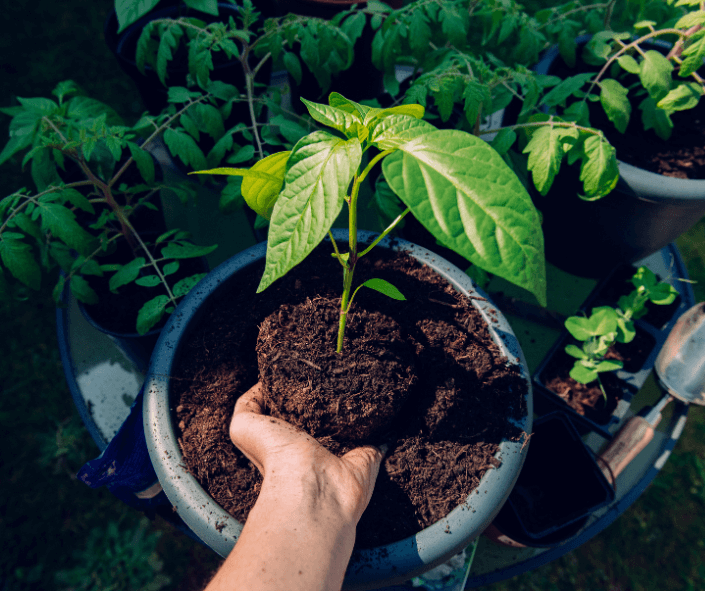
New sweet peppers are being bred for small fruits and compact plant size. The lunchbox snacking peppers are most notable. Grow them all, orange, yellow, and red, with the Lunchbox Pepper Mix. The pepper plants reach 28-36 inches and produce lots of sweet peppers.
Planting recommendations: One plant per 3-gallon pot. Transplant starts after the threat of frost has passed. They produce best with days and nights become warmer. Fruits can be harvested green, but I like them best if allowed to reach full color.
Greens
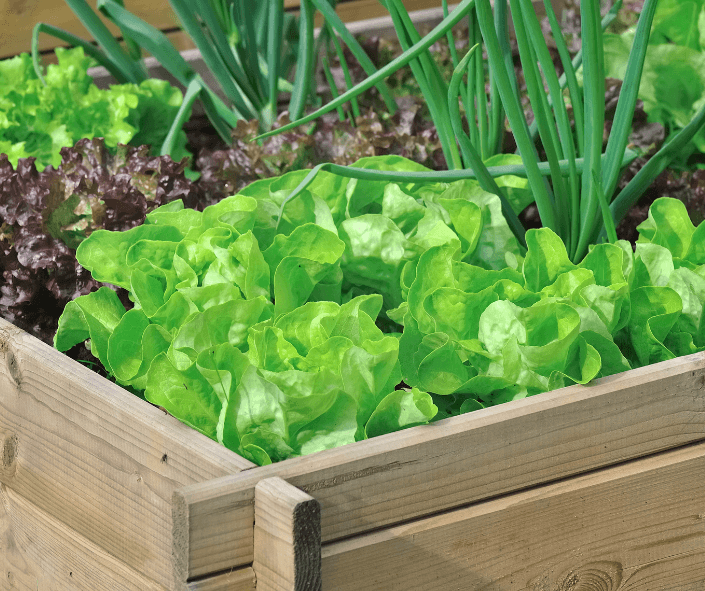
Nothing tastes better than greens in pots, such as spinach, kale, Swiss chard, collards, and various lettuces. For the most part, all are suitable as container plants. Unlike the warmer crops mentioned above, many greens are more cold tolerant and can be started in spring before the danger of frost is past, usually by a couple of weeks. Then the greens can be re-sown in summer (If heat tolerant) or in the fall as temperatures cool. The best greens for summer are Swiss chard (we like the colorful Rainbow Mix), heat-tolerant lettuces, like the heirloom ‘Black Seeded Simpson‘, and beautiful Tuscan kale, like ‘Black Magic‘. Please refer to the video below for planting details. The pots are a good size for growing lots of greens!
More small-space gardening reading and information:

